The Longleaf Ridge Master Naturalist chapter of Texas Master Naturalists is located in one of the most heavily wooded areas of East Texas, surrounded by 3 lakes: Lake Sam Rayburn, Toledo Bend, and Dam B (aka Lake Steinhagen).
It is just a few miles north of the Big Thicket National Preserve. The wild Neches River is the western boundary of Jasper County, and the Sabine River is the eastern edge of Newton County.
In addition to the lakes, our area offers lots of public places where naturalists can explore: Martin Dies Jr. State Park (Texas Parks & Wildlife Dept.), two national forests (Angelina & Sabine, United States Forest Service), E.O. Siecke State Forest (Texas Forest Service), three rivers (Angelina, Neches, & Sabine), numerous Army Corps of Engineers (ACOE) parks, Sandy Creek Park (City of Jasper, TX), Big Thicket National Preserve (National Park Service), Watson Preserve (west of the Big Thicket), and the Trail Between The Lakes (TBTL, Sierra Club).

Longleaf pine (Pinus palustris) is native to the southeastern United States, found primarily from Virginia to Florida and reaching westward. Jasper and Newton counties are on the westernmost edge of that range.
Longleaf pines are slow growing and adapted to a fire ecology. A longleaf pine seedling may spend several years in the grass stage, where the needles look like a dark green clump of grass no more than a foot tall. Historically, whenever fire wiped out competing brush species, the fire-resistant seedlings would break dormancy and grow rapidly until they dominated the forest.
In the 20th century, logging removed much of the old growth longleaf pines and timber managers replanted with faster growing species of southern pine. However, longleaf pine forests are host to many rare and endangered species of flora and fauna. The longleaf pine ecosystem is known as a fire climax community. Several organizations and timber management companies are working to restore longleaf pines in their native range.
Read more about longleaf pine savanna restoration at the USDA Forest Service’s website.

For more information on our statewide organization, visit the main Texas Master Naturalist Program.
The Texas Master Naturalist™ organization is sponsored by and funded by the Texas Parks and Wildlife Department and Texas A&M AgriLife Extension Service.




